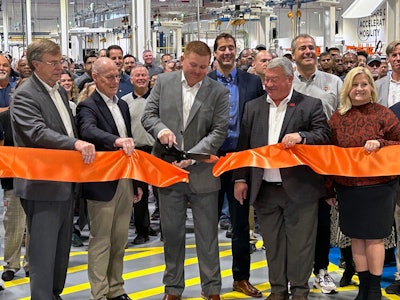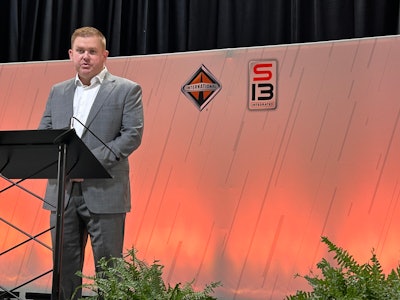 Brandon Tucker, director of operations of the Huntsville Powertrain Plant, cuts the ribbon Wednesday at the plant that will build the S13 powertrain.
Brandon Tucker, director of operations of the Huntsville Powertrain Plant, cuts the ribbon Wednesday at the plant that will build the S13 powertrain.
The company in February 2020 broke ground on a 110,000 sq. ft. expansion. The now-410,000-sq.-ft. facility has fully transitioned from a single assembly line to two (one for the T14 transmission and one for the S13 engine), along with the incorporation of three major machining lines. To date, more than 1 million engines have been built in Huntsville since the plant opened in 2008.
 Brandon Tucker, director of operations of the Huntsville Powertrain Plant, was joined by executives from Navistar and parent-company TRATON in Huntsville in commemoration of Wednesday's ribbon cutting.
Brandon Tucker, director of operations of the Huntsville Powertrain Plant, was joined by executives from Navistar and parent-company TRATON in Huntsville in commemoration of Wednesday's ribbon cutting.
The Huntsville plant employs more than 230 workers in the area. The 2020 expansion added roughly 100 jobs to the plant and the first commercial production S13 units rolled down the line in North Alabama last month.
In addition to the new assembly and machining lines, sustainability improvements were made to the plant; improvements that include LED lighting, a wastewater evaporator to minimize wastewater discharge, and new augers to separate recyclables from refuse to reduce landfill waste.
Manufacturing process improvements were also installed – like robotic assembly cells, enterprise connected manufacturing devices with advanced error proofing, and automated guided vehicles that allow the plant flexibility when needed.










